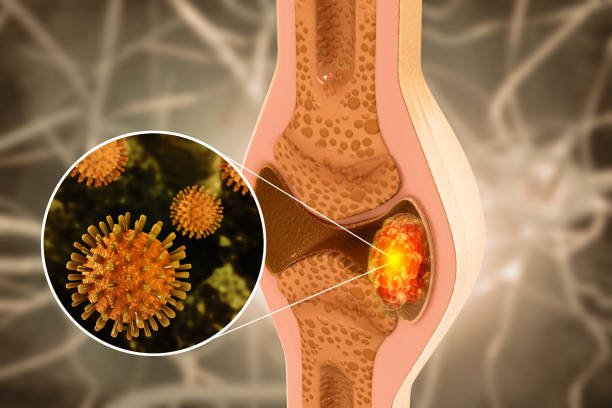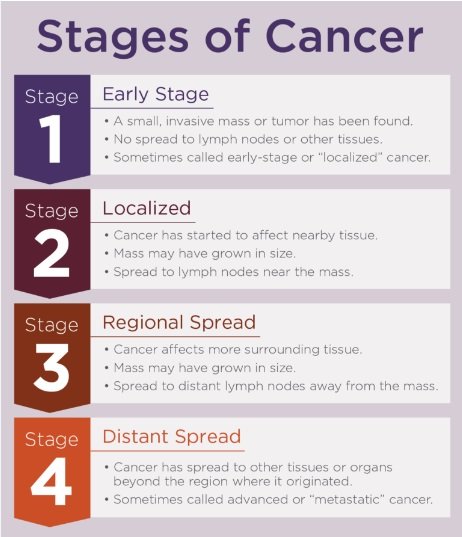
6 Major Signs of Bone Cancer! Bone Cancer Causes, Types, Stages, Examinations and Survival Rate Analysis
People who have been working as laborers for a long time may often suffer from chronic pain in the waist and back. However, bone and joint pain that does not heal for a long time may be a precursor to bone cancer. However, most people do not understand bone cancer. Little is known about it, which often leads to the misunderstanding of pain caused by tumor compression as chronic pain caused by labor or prolonged sitting and delay in seeking medical treatment.
According to the cancer registration report, among all cancers, bone cancer does not rank in the top 20 in terms of incidence or mortality, so it is easily ignored by most people. However, what is the survival rate for bone cancer and is amputation necessary? By understanding the causes, symptoms, diagnosis and treatment of bone cancer, join us in uncovering the mystery of bone cancer.
What is bone cancer?
Like other cancers, bone cancer is also named after the origin of the malignant tumor, which means “malignant tumor on the bone”, which is generally referred to as “primary bone cancer”. It is a rare malignant connective tissue bone tumor that originates from primitive mesenchymal cells and accounts for only 0.2% of malignant tumors. Metastatic bone cancer (bone metastasis) is caused by the spread and distant metastasis of cancer elsewhere in the body, such as breast cancer, prostate cancer, and lung cancer.
Radiation oncologist He Huaide said that the World Health Organization (WHO) has identified six major types of primary bone cancer: chondrogenic, osteoblastic, chordal, vascular, other malignant stromal and Evans’ sarcoma. Because each pathophysiology is extremely different, and each person’s tumor image appearance and biological behavior are different, it is recommended that imaging examinations and tissue sections are still needed for early diagnosis of tumors that are usually aggressive.
Since the probability of primary bone cancer is low, bone metastasis is the cause of most bone malignancies. This article will focus on the main common types of primary bone cancer, such as osteosarcoma, chondrosarcoma, and Evans sarcoma.

Why do you get bone cancer? Bone tumor causes
There is still no clear cause for the formation of bone cancer, but people who meet the following conditions have a higher risk of developing bone cancer than others:
- Genetic disorders:
Certain rare genetic disorders may increase the risk of bone cancer, such as Li-Fraumeni syndrome or hereditary retinoblastoma. - Radiation therapy:
When cancer patients receive radiation therapy, they may increase the risk of bone lesions and then bone cancer. - Benign bone tumors:
If you have benign bone tumors, your chance of developing bone cancer is higher than the average person because of the possibility of malignancy.
Types and locations of bone cancer
According to the National Cancer Institute, chondrosarcoma is most common in adults (40%), followed by osteosarcoma (28%); in children and adolescents, osteosarcoma (56%) is the most common, followed by Evans’ sarcoma (34%) comes second. Chordoma, undifferentiated pleomorphic sarcoma, ameloblastoma, fibrosarcoma, and giant cell tumor are also types of primary bone cancer, but in smaller numbers.
Depending on the type of cancer cells, bone cancer can be divided into the following categories:
- Osteosarcoma
Osteosarcoma, also known as malignant osteosarcoma, is the most common type of bone cancer. Nearly 70% of bone cancers in children are osteosarcomas. Osteosarcoma is mainly caused by the canceration of bone cells. It usually occurs in the legs or shoulders of children or young people, but extraskeletal osteosarcoma (Extraskeletal osteosarcoma) may also form.
Radiation oncologist He Huaide pointed out that according to statistics, nearly 70% of osteosarcoma cases show some degree of chromosomal abnormalities, such as Li-Fraumeni syndrome, Bloom syndrome and congenital angiotrophic cutaneous anomalies. In patients with Rothmund-Thomson syndrome, there are alterations in p53, Rb1, and DNA repair/surveillance genes, which are associated with an increased incidence of osteosarcoma. - Chondrosarcoma
Chondrosarcoma is more likely to occur in middle-aged or elderly people. It is characterized by being less likely to metastasize and progressing slowly. Chondrosarcoma has no symptoms at first, but by the time the patient feels pain, the tumor has grown to become quite large. The most common sites for chondrosarcoma are the pelvis, knees, upper femur, ribs, or shoulders.
Although the exact cause of chondrosarcoma is not yet clear, current cytogenetic studies have found that patients may develop gene mutations such as EXT1/2, TP53, Rb1, and IDH1/2, as well as malignant transformation of benign lesions during treatment. Pay close attention. - Ewing sarcoma
Ewing’s sarcoma and osteosarcoma are both more likely to occur in children and adolescents, and they tend to occur in the extremities and pelvis, especially the thighs and femurs.
Be careful with bone headaches! 6 major symptoms of bone cancer
The early symptoms of bone cancer are not obvious and can easily be mistaken for arthritis. The main possible symptoms are as follows:
- Persistent bone pain.
- A rapidly growing malignant mass appears, causing swelling, pain, and even ulceration in the affected area.
- Pathological fractures (bones that break easily due to slight stress from work or sports).
- There will be numbness in the distal part of the affected limb due to compression of nerves and blood vessels.
- Movement dysfunction.
- Other symptoms: weight loss, loss of appetite, fever, back pain.
How to check for bone cancer?
In addition to general physical examination, doctors will diagnose bone cancer through the following methods:
- Blood test:
The concentration of alkaline phosphatase (ALK-P) in the blood is positively correlated with bone cancer. - X-ray examination:
X-rays are used to find out the location and size of bone tumors, whether there is periosteal reaction, and their surrounding changes. - Bone isotope scan:
Used to assess the activity of bone tumors and to find the presence of other lesions in the body. These include bone scans (using Technetium-99m as the active agent) and positron emission tomography (taking advantage of the high metabolic rate of tumor cells to measure the uptake of radioactive label F-18-FDG). - Imaging examination:
Imaging examination can help doctors determine the location and size of bone cancer tumors, such as computerized tomography (CT) or magnetic resonance scanning (MRI), to obtain more detailed tumor information, such as cross-sectional images and tumor expansion. condition, tumor location, etc. - Biopsy:
The specimen can be removed mainly through acupuncture or surgical resection, but the latter is more invasive. Biopsy is when the doctor suspects that the patient’s bone tumor is malignant. He or she will remove a portion of the tumor specimen and conduct laboratory tests to further determine the type of tumor and the stage of the bone cancer.
What are the stages of bone cancer?
Biopsies can help doctors determine the development of bone tumors and plan subsequent medical measures.

Bone cancer treatments
In the treatment of bone cancer, surgical resection is usually combined with chemotherapy or radiation therapy. Depending on the type and size of bone cancer, the scope of surgical resection can be large or small. In order to prevent the spread of cancer cells, the scope of surgery may not only include the removal of the bones in the affected area, but also the removal of surrounding normal tissue. But for most patients who want to avoid surgery. Surgical resection is likely to remain the mainstay of curative therapy, often combined with chemotherapy and radiotherapy.
After the tumor is removed, depending on the results of the biopsy, postoperative radiotherapy or chemotherapy may be required to kill cancer cells lurking elsewhere in the body. For example, bone cancer can easily metastasize to the lungs. In addition to removing the bone tumor, chemotherapy may also be needed to remove cancer cells that have metastasized to the lungs. Or radiotherapy can be used to reduce the size of the tumor to facilitate surgical removal. Or some patients may use high-intensity radiotherapy to destroy cancer cells in the resected bone, and then use the resected bone as material for bone reconstruction surgery.
Is there any cure for bone cancer? Does it have to be amputated?
In the early days when medical technology was less developed, the amputation rate for bone cancer was indeed high. However, there are now many methods of bone reconstruction surgery (limb preservation), unless the bone cancer tumor is really too large or too long to be reconstructed. The surgical site can basically avoid amputation.
After the tumor is removed, the defective bone may be installed into an artificial joint or use allograft or own bone as a material for reconstructive surgery. Generally speaking, patients who use artificial joints have a shorter recovery time, but they are prone to loosening after long-term use. The opposite is true for patients who use bone transplants. Although the initial recovery time is long, new cells will gradually be produced at the transplant site. And it gets blood flow supply, and after complete healing, it is more durable than artificial joints.

Bone cancer survival rates?
Bone cancer survival rates vary depending on the type and extent of spread. According to statistics from the American Cancer Society, the average 5-year survival rate for chondrosarcoma that has not spread is 91%, but if distant metastasis occurs, it is as low as about 22%. On average, the 5-year survival rate for chondrosarcoma is approximately 78%, which is higher than the 60% for osteosarcoma or 61% for Evans’ sarcoma.
Can bone cancer be prevented?
Since genetic diseases and cancer-prone conditions due to radiation therapy are still irreversible causative factors, all we can do is cultivate healthy living habits. Eat a balanced diet, exercise more, quit smoking, drink less alcohol, etc. to reduce the chance of getting sick.
If you find that you have bone or joint pain, especially if the pain is particularly severe at night, it is recommended that you go to the hospital for diagnosis as soon as possible. It is likely to be a sign of bone cancer. Early detection and treatment can reduce the risk of amputation or the spread of cancer cells.












